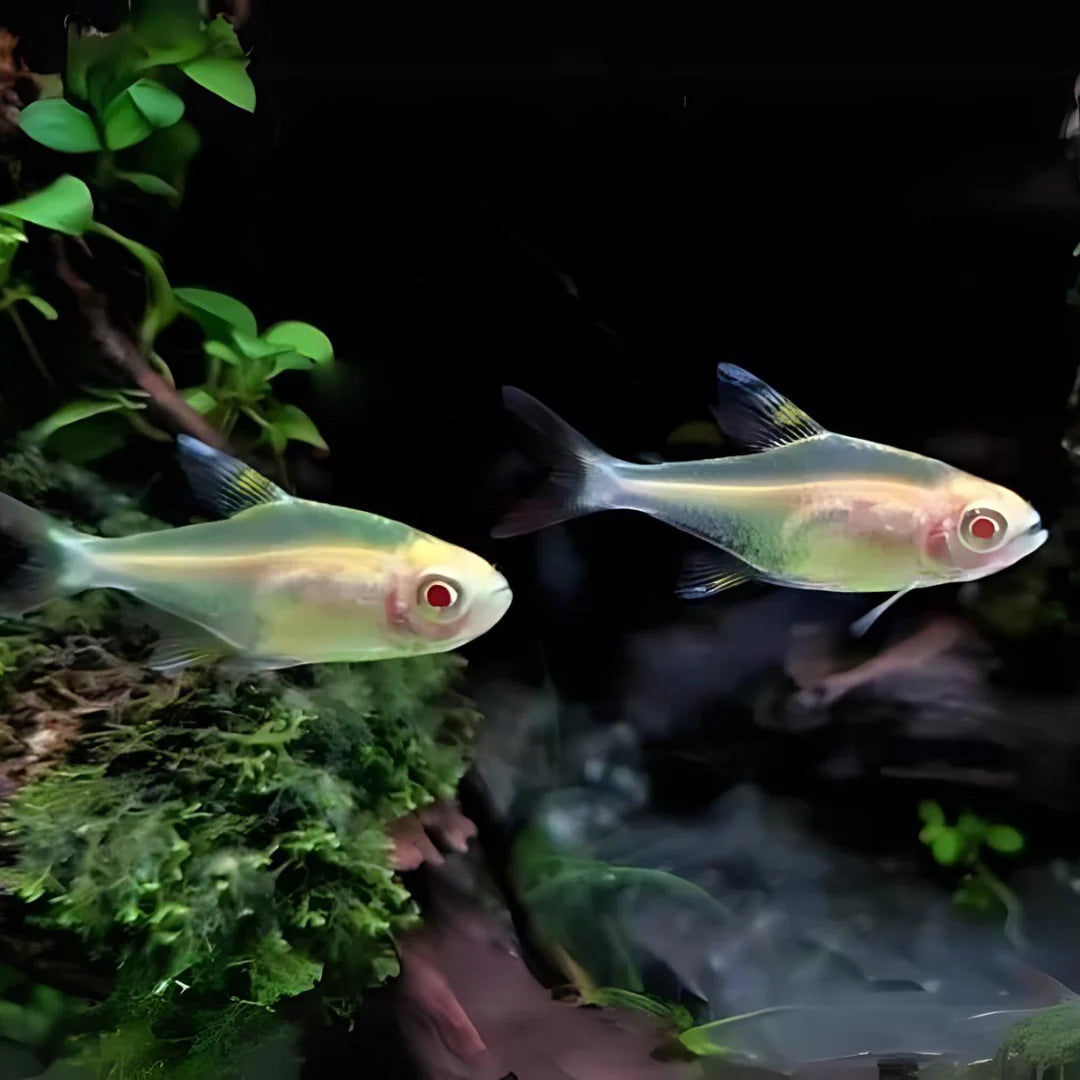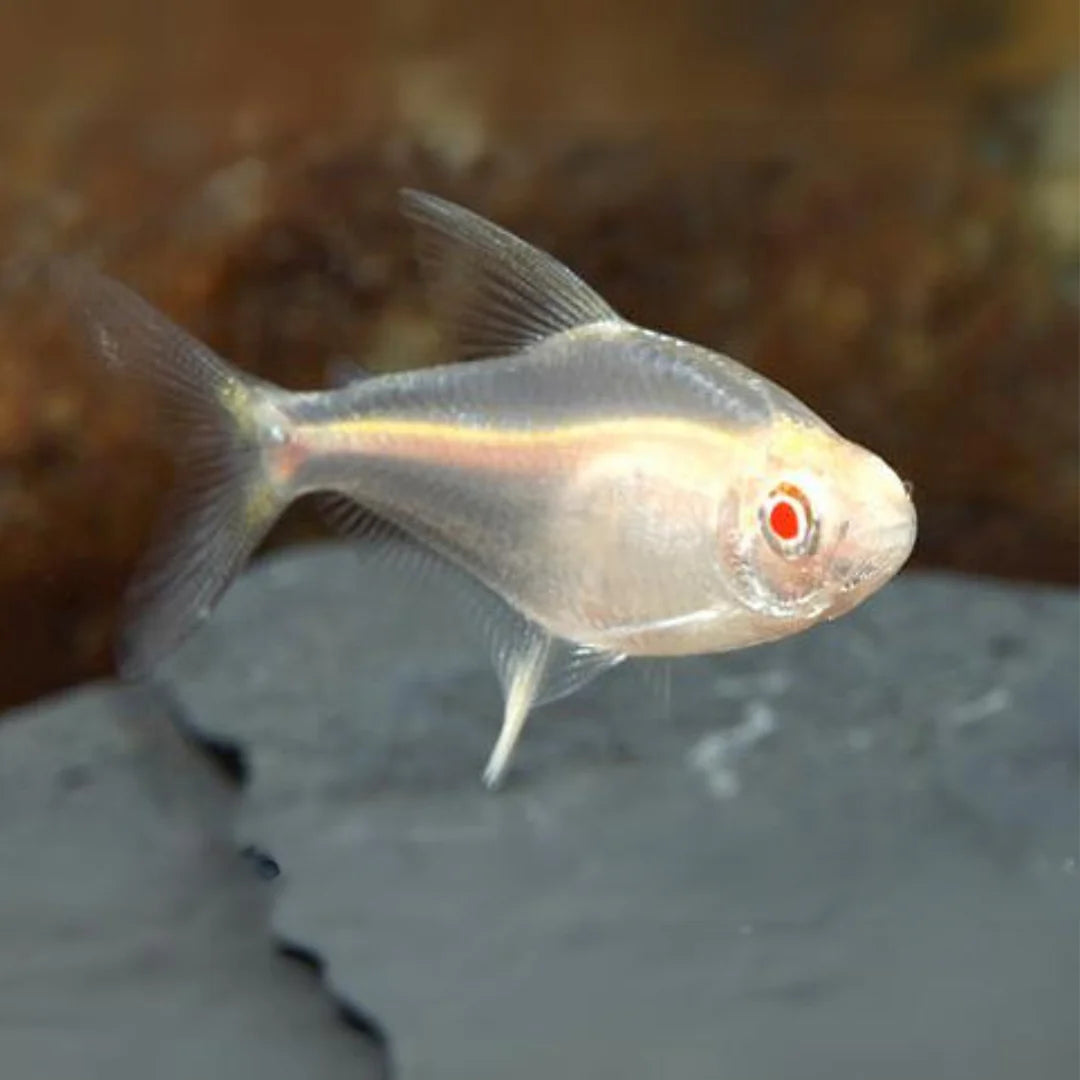X-Ray Tetra (Pristella maxillaris) - Live Fish
X-Ray Tetra (Pristella maxillaris) - Live Fish
Total items
Product subtotal
Detailed Description
Detailed Description
DESCRIPTION OF ITEM:
The X-Ray Tetra (Pristella maxillaris), also known as Albino Pristella Tetra, is a vibrant and striking variant of the Pristella Tetra. This albino form is well-loved in the aquarium hobby due to its bright, translucent body, which gives it an almost ethereal appearance. It’s a peaceful and active species that does well in community tanks, especially with its schooling nature and eye-catching coloration.
Key Features of the X-Ray Tetra:
-
Appearance:
- The X-Ray Tetra has a translucent, pale body, which often takes on a soft golden or pinkish hue due to its albino genetics. Its red eyes are a standout feature, and the combination of the pale body and bright eyes creates a striking appearance.
- The body is slender and streamlined, helping it swim quickly and gracefully. Like other Pristella Tetras, the albino form has black markings on its fins and a distinctive black line running through the center of the body, from the gills to the tail, giving it an elegant "X" shape across the body when viewed from the side.
- They generally grow to about 1.5 to 2 inches (4-5 cm), making them a smaller tetra species.
-
Habitat:
- Native to South America, the Pristella Tetra is typically found in the slow-moving rivers and streams of the Amazon Basin. They thrive in well-planted tanks with gentle water flow, which mimics their natural environment.
- In the aquarium, they do best in groups of at least 6-8 individuals, as they are a shoaling species and feel safest when swimming in numbers.
- These fish prefer water temperatures between 72-82°F (22-28°C), with a pH range of 6.0-7.5. They also do best in soft to moderately hard water.
-
Diet:
- The X-Ray Tetra is an omnivore and has a relatively easy diet to cater to. In the aquarium, it will accept a variety of foods, such as:
- High-quality flake food or pellets
- Frozen or live foods like brine shrimp, daphnia, and bloodworms
- Vegetable-based foods, such as spirulina, blanched spinach, or algae wafers
- A varied diet helps maintain the fish’s health, vibrant coloration, and natural behavior.
- The X-Ray Tetra is an omnivore and has a relatively easy diet to cater to. In the aquarium, it will accept a variety of foods, such as:
-
Behavior:
- X-Ray Tetra are peaceful and social, making them a perfect choice for a community aquarium. They are not aggressive and will coexist well with other peaceful species, such as neon tetras, gouramis, and corydoras catfish.
- They prefer to swim in schools and will feel more comfortable in a group of 6 or more. If kept alone, they can become stressed and exhibit shy or withdrawn behavior.
- Their schooling nature makes them fun to watch, as they often move together in coordinated patterns. They swim primarily in the middle to upper levels of the tank.
-
Tank Care:
- The X-Ray Tetra is relatively hardy but benefits from a well-maintained tank.
- They require a gentle filtration system to avoid strong currents, and it’s best to provide live plants, smooth rocks, and driftwood to mimic their natural habitat.
- Weekly water changes are essential to maintain water quality. A tank with gentle lighting and well-planted areas will help these fish thrive.
- These tetras are best kept in a stable environment with consistent water parameters.
-
Breeding:
- Breeding X-Ray Tetra is not very common in home aquariums, but it is possible with the right conditions.
- They are egg-scattering species and will lay their eggs on plants, the aquarium glass, or other surfaces. It is recommended to have a breeding tank with plenty of plants or spawning mops to collect the eggs.
- After the eggs are fertilized and laid, they will hatch in about 2-3 days. The fry are tiny and will need to be fed infusoria or liquid fry food until they are large enough to eat larger foods.
Conclusion:
The X-Ray Tetra is a beautiful, peaceful, and active fish that makes an excellent addition to a community aquarium. With its translucent, golden-pink body, red eyes, and elegant swimming behavior, it can be an attractive centerpiece in a well-planted tank. These tetras are easy to care for, provided their basic water requirements are met, and they thrive in a group setting where they feel safe and social. Whether you're a beginner or an experienced aquarist, the X-Ray Tetra is a wonderful fish to keep in a peaceful, vibrant tank.
Product features
Product features
Materials and care
Materials and care
Merchandising tips
Merchandising tips
Share






